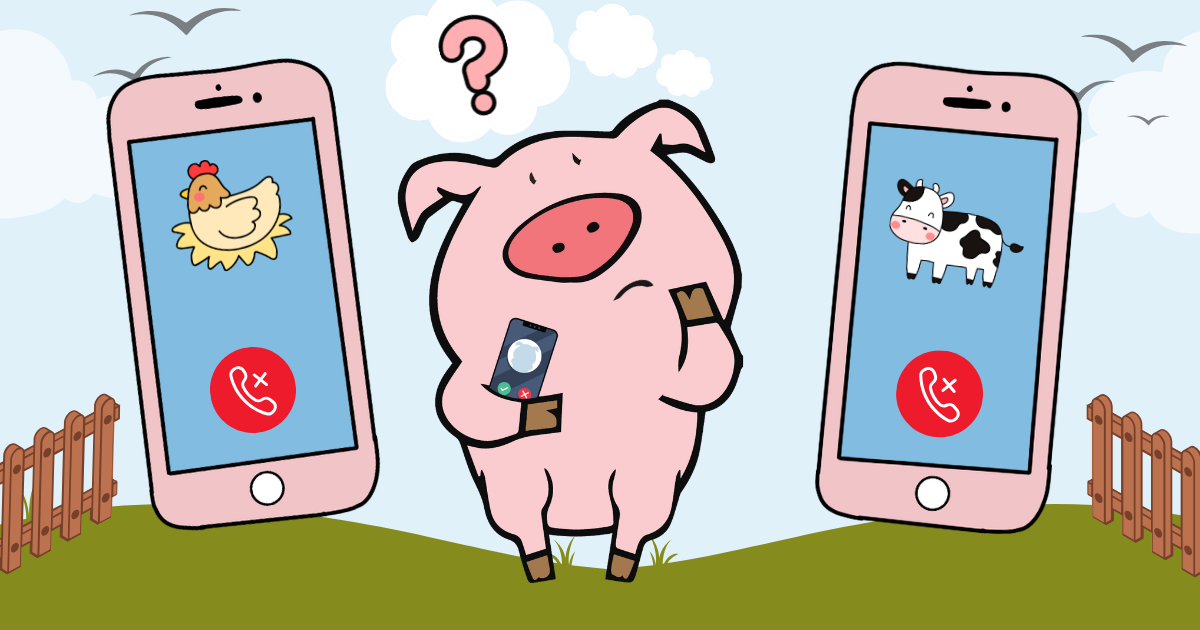Is your carrier or VoIP number dropping calls? Take it from someone who’s both used old phones and also lived out in the country — there’s nothing more annoying than your phone calls not working! But what can you do when you get a dropped call?
Well, like most things, persistent dropped calls mean it’s time to troubleshoot, troubleshoot, troubleshoot! (Don’t worry, troubleshooting can sound a little scary, but you may discover some very simple and straightforward solutions in the event of dropped calls from your cell phone, wifi calling, etc.)
- What’s a dropped call?
- How to fix dropped calls on a VoIP/Cloud system
- How to fix dropped calls on a cellular network
- Location Problems
- Device Problems
What’s a dropped call?
First, let’s just define it so we’re all on the same page. We’re explicitly defining “a dropped call” as when two or more phone lines are actively connected on a call, and then … the call ends! More specifically, it’s when neither party hangs up, but the call ends for some reason or another.
There are two main causes of dropped calls, and they depend on whether you’re using an online phone system, or a cell phone/landline. Let’s go over both.
How to fix dropped calls on a VoIP/Cloud system
If you’re using something like Google Voice, ZOOM, or RingCentral to make a phone call and you’re getting dropped calls, this ultimately most likely has to do with an internet connection gone bad. (Note: Keep in mind that your VoIP’s Quality of Service (QoS) will suffer if your ISP’s internet connection doesn’t prioritize VoIP traffic!)
Steps to Fix VoIP Dropped Calls
We suggest doing the following in this order, until it’s fixed:
1. Restart the app
Typically you will see a “Network Error” or “Poor Internet Connection”-type error message on your screen from whichever service you’re using. None of the following fixes are as tried-and-true as the “turn it off and on again” method, so make absolutely sure you restart the app one time first!
2. Test your internet speed
The fastest way to see if your internet is to blame is to test your speeds. There are plenty of browser-based websites that will let you check your real-time internet speed, like Speed Test. (No, we’re not affiliated!) If the speed check is struggling, that likely confirms your internet speed is to blame for the dropped calls. If it is, the problem is almost for sure one of the following.

3. Reboot your router
You might want to do this anyway, but make sure you do this ahead of any of the next steps. Without getting into too much jargon, sometimes your internet box needs a quick reset. (It’s also possible you may need to update your router’s hardware or software, which will require some Googling of your router’s brand and device # to figure out how to do this.) If your dropped calls keep persisting, keep going.
4. Move your router
Next you’re going to want to physically move your router to another room. This may or may not be possible, depending on where the cables are in your location. However, it’s completely possible that the physical location of what is zapping your internet out through your current place is not optimal. Sometimes the router could be placed too close to various materials that could obstruct or interfere with your wifi connection. (We’ve even heard of situations where, yes, mirrors near the router are messing up internet signals from spreading throughout a house!)
5. If possible, try a wired connection
If none of the above is working, it would be helpful to double check whether the problem is the internet itself, or your router. The best way to do that is by making a phone call on a device that is physically wired into your router, like a desktop computer connected via ethernet. (Surprise! Ethernet cables are still in use though you might not hear about them often). If you can utilize a wired connection, and your VoIP calls are still dropping, at least you’ve eliminated the problem being the router.
6. Call your Internet service provider (ISP)
No, we’re not going to tell you to go climb a tree next (but we may suggest something like this for your cellular connection), because sadly, the next and final step is to contact whoever services your internet. If you correctly did all the tried-and-true troubleshooting above, at least you can rest knowing you aren’t the problem, but something is up with the company that is providing your internet. The issue could be something physically around your location, or it could be a problem over on their end. If nothing else, contacting them will also likely help you identify and resolve the issue for good.
How to fix dropped calls on a cellular network
Ah, the dreaded dropped calls on your cell phone. There are two broad issues when you encounter this issue: it’s probably either your location, or your device.
Let’s go over each in turn:
Location Problems
1. Something is physically between you and reception
Just as some materials can interfere with your router signal like we mentioned earlier, the list of stuff that can block cell reception is as long as the periodic table of elements. Common things like trees, buildings, lead, rain clouds/bad weather, and, well, most solid things are almost always the culprit. While you likely already know this, what you may not know is that you can buy cell reception booster devices for roughly $50 or so. We don’t have any particular device to endorse, but they’re all over Google, Amazon, etc. should you choose to investigate if one is right for you, and your mountain-side apartment.
2. You’re just too far from a cell phone tower
The opposite of “something in the way” is “too far away” (we think). The point is, if the closest cell phone tower is roughly 40-50 miles from you, you’re likely not going to get any reception, or in this case, get spotty calls. This can still happen regardless of whether you’re on a 4G or 5G network.
3. Too many people are using one tower
If you’re at a football game and your phone calls are dropping, well, it may be because too many devices are trying to use the same tower(s). But good work connecting to the internet to research this guide! (Wi-Fi calling is your best bet in wildly congested places, if you can find an internet connection.)
For all these issues, your only recourse is to cross the street, or go outside, (or climb that tree). Basically, you may need to physically move yourself with your phone to another location (or to wait for someone to build a new cell phone tower right where you’re standing).
Device Problems
1. You have too many things open on your phone
Believe it or not, this should be the very first thing you double-check! For lack of a better term, cell phones sometimes malfunction and drop calls if they can’t keep up with the volume of stuff going on. Try this first!
2. Your cell phone case is blocking your signal
Yes, this is really a thing. It’s rare, but depending on an unfortunate rare combination of a specific phone with a specific case, like a metal case, try your calls without the case to make absolutely sure this isn’t the problem.
3. Check your phone settings
Your phone may possibly have some weird settings going on, whether you changed them manually yourself or not. Regardless if it’s an Android or iOS device, the most common ones to mess up call dependency are your time zone settings not being synced to your actual location. Also, if your internal caller ID settings are switched to “off,” it could signal to a phone company that your device is untrustworthy. (And of course, PLEASE check to make sure “airplane mode” isn’t on!)
4. Your SIM card is dying or damaged
Typically, most cell phones have a little tiny card in them called a “SIM card” which basically gives you the ability of having a unique phone. If that tiny, little card is messed up somehow (or gets removed), your phone calls will be spotty at best, and totally unable to happen at worst. Ask your phone provider to help if you rule everything else out and suspect this is the issue!
5. Your phone is just too old, or something else is faulty
All else failing, it might just be time for your phone to go to its home in the sky. You may want to check if it’s as simple as a dying battery or updating your software. If you’ve tried everything else, the issue might be quite technical and a new phone could just be an easier fix. Check with your phone provider to see if they have exchange or repair programs (like Apple Care) before you run out and buy a brand new phone!
We’re pretty certain that the above steps may solve most dropped call issues. While we don’t hear about dropped calls very frequently from our customers, if you have an active number with NumberBarn, you actually have the option to place outbound calls via VoIP (wifi) or receive and place calls via a setting known as Call Back Mode, which uses your existing phone number’s cellular connection. And you can easily switch between the two settings at any time in the app or your account. (Little known fact – NumberBarn phone numbers are mostly classified as “wireline” so you can use them in different ways via wifi or your existing cellular connection, but they aren’t actually VoIP or wireless phone numbers.)
If you have questions about dropped calls with your NumberBarn number (or maybe you just want to add a second number to your current phone for backup, or to better protect your primary number) you can always contact us here, or check out our FAQs.

